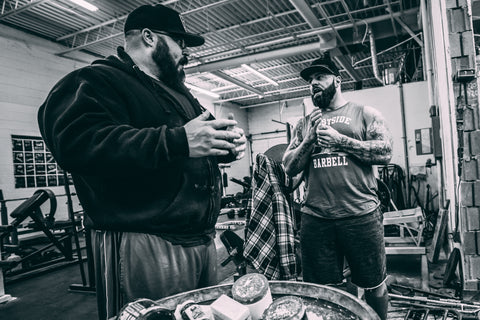WSBB Blog: 4 Week Deadlift PR Plan - Week 2

We arrive at the second week on our quest to hit a deadlift PR. We focused on deficit deadlifts during the first week, one of the most effective lower-body posterior exercises you can perform. However, along with this effectiveness comes a recovery burden that a coach must address. Deficit deadlifts, particularly multi-rep deficit deadlifts above 90%, place a tremendous amount of strain on the body.
In order to counterbalance this impact on recovery and set the athlete up for continued success throughout the month, a dynamic effort style training day is used to replace what would traditionally be a max effort training day. This is only for one week out of the four-week plan and is designed to do one thing: give the lifter a chance to maximally recover and set themselves up for a future PR single rep lift.
The focus on maximal recovery and using the current training session to set up the success of the next training session is what makes this overall approach effective. Below, we will go over what a dynamic effort style lower body training day includes when used in a place of a max effort lower variation.
Max Effort Lower Week 2 - Dynamic Effort Style Deadlifts
As mentioned above, athletes will replace this week's max effort lower exercise with a dynamic effort style exercise instead. In this case, dynamic effort deadlifts will be utilized. To properly execute your dynamic effort deadlifts, be sure to have your bands properly hooked up. To do this, you will want to double your minibands by hooking one loop around a band hook, wrapping the entire band around the opposing band hook, and connecting the remaining loop back onto the same band hook you placed the first band loop onto.
As far as sets and reps go, you will pull six to eight sets of singles. Intensity-wise, the overall weight at the top should equal 70-75% of your most recent deadlift PR, the properly connected minibands making up 180-200lbs of that weight. If your deadlift max forces you to load an equal or lesser weight onto the barbell than the band tension, pull your deadlifts using plate weight only.
Accessory Exercises
Last week, we focused on training the glutes and hamstrings. This week, we will focus on training the quads and hamstrings. Most people realize the importance of the posterior lower body muscles when deadlifting, however having a strong set of quads is just as important, especially if you pull sumo.
Front Squats - this exercise will be performed for three sets of three reps, keeping the bar weight around 75-80% of your front squat max. More experienced lifters can choose to do these beltless.
Hamstring Curls - this exercise will be performed for four to six sets of twelve to fifteen reps. Focus on controlled reps, allowing the hamstrings to experience proper time under tension. If you do not have access to a hamstring curl machine, you can perform these using a band; however, you should perform as many reps as possible for your sets.
Dumbbell Lunges - this exercise will be performed for three sets of ten to twelve reps per leg. Focus on controlled reps using a weight you can handle; lower the weight if the technique breaks down.
GHR Sit-ups - this exercise will be performed for five reps of twenty to twenty-five reps. More experienced lifters can perform this using a miniband or monster miniband as resistance.
GPP Work
Wheelbarrow Walks - twelve trips, 30 yards down 30 yards back, maintaining a constant grip on the wheelbarrow. The wheelbarrow should be loaded using the heaviest weight you can move without losing grip throughout the duration of each trip.





